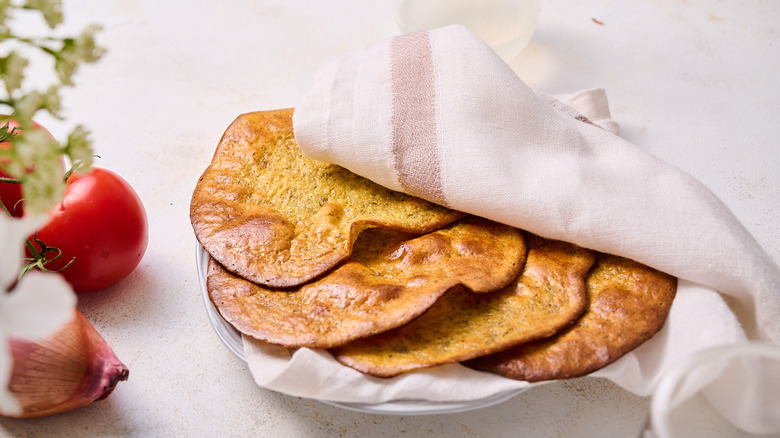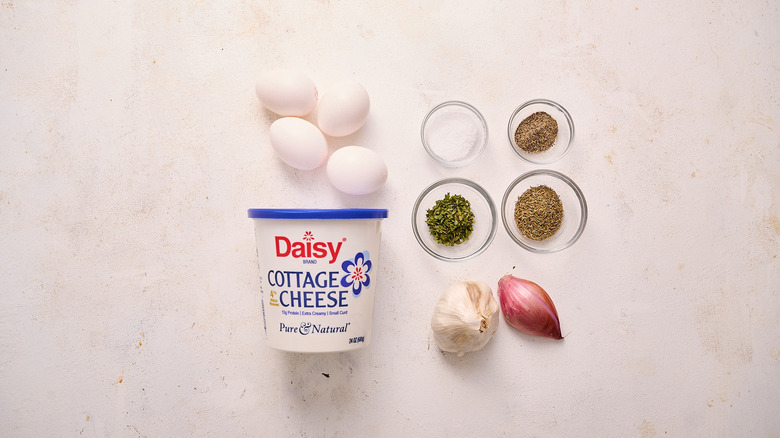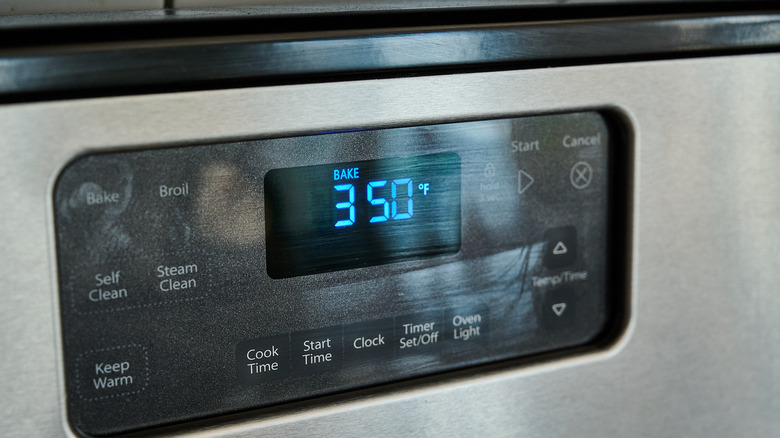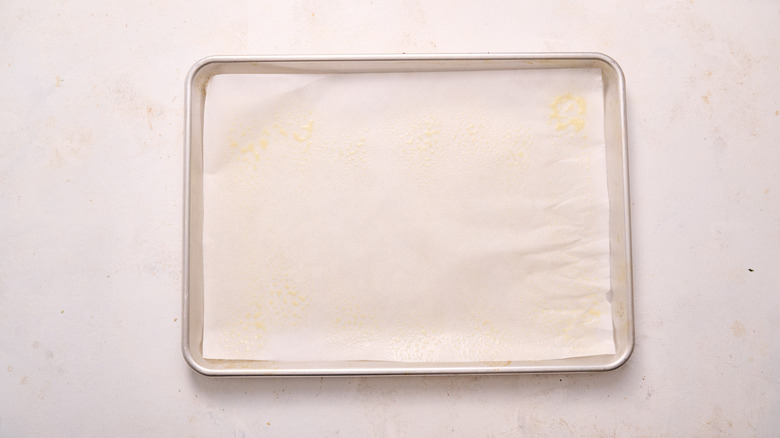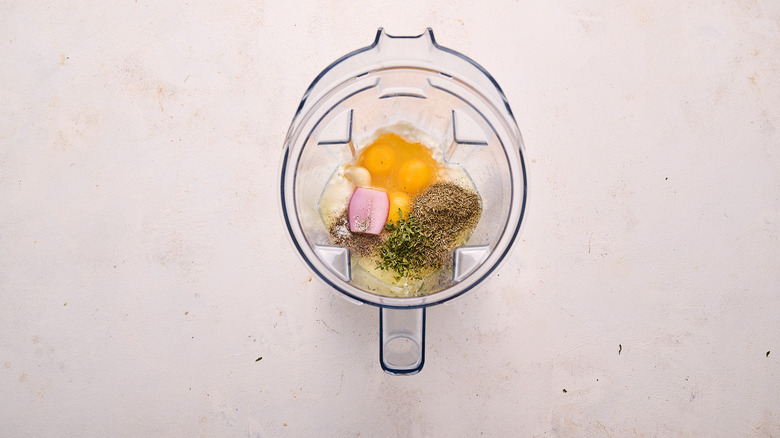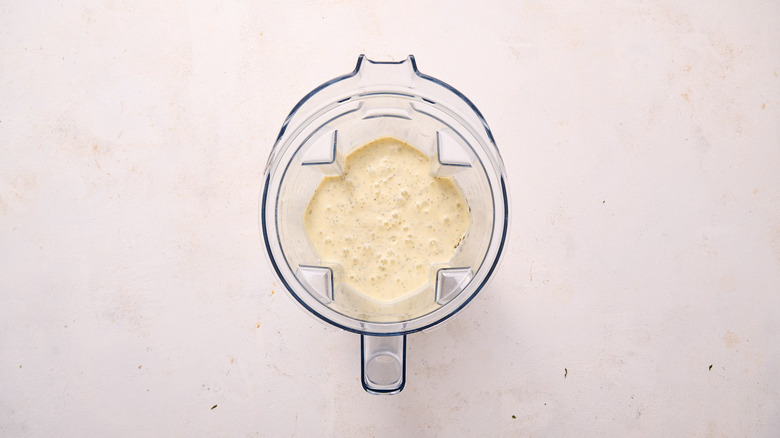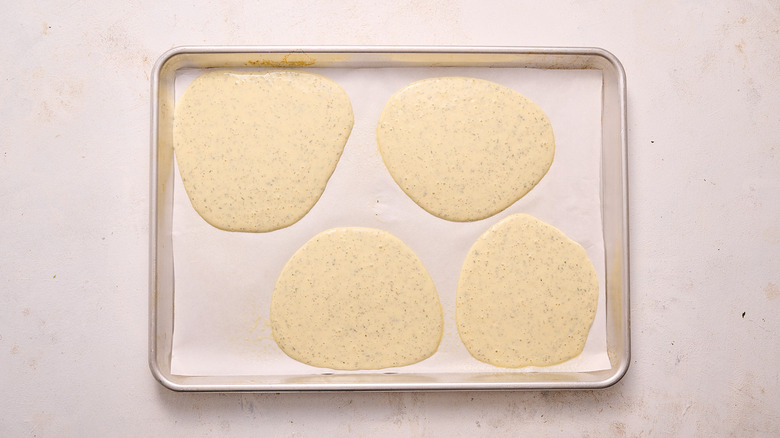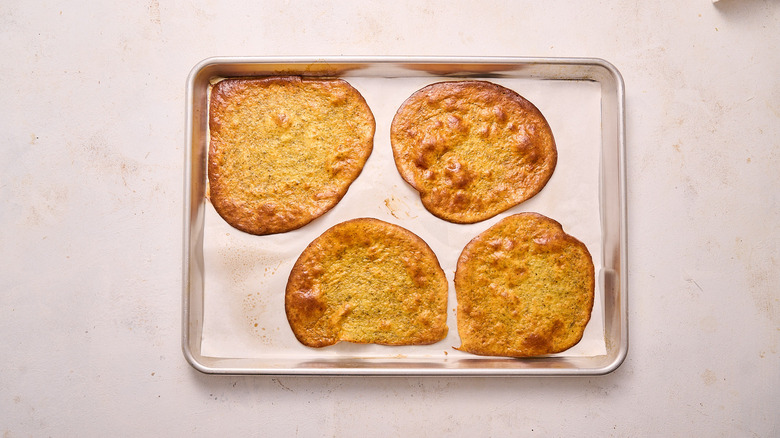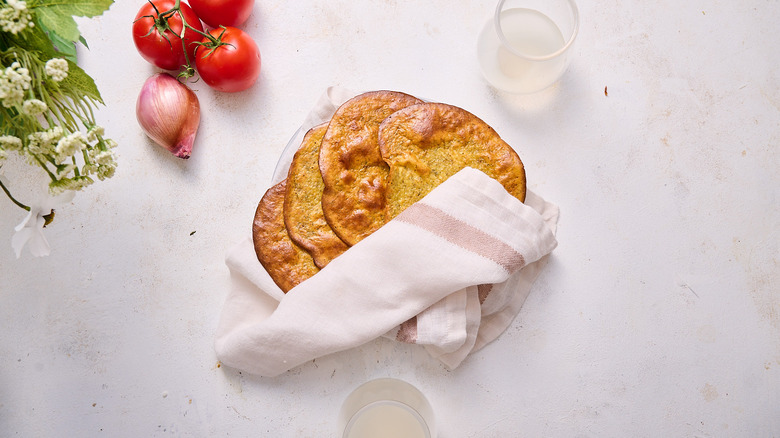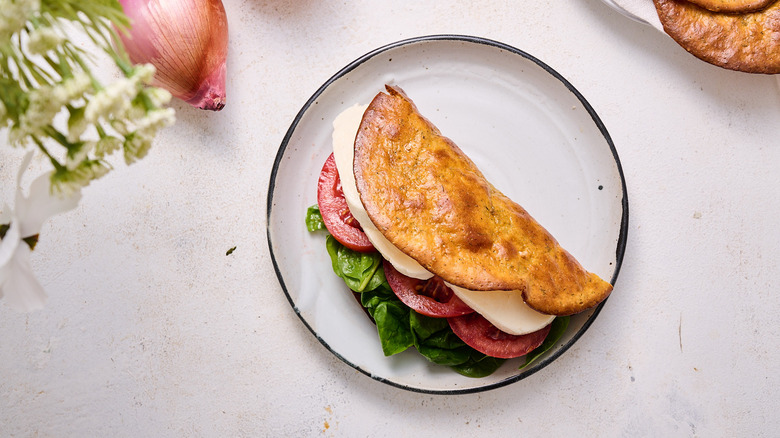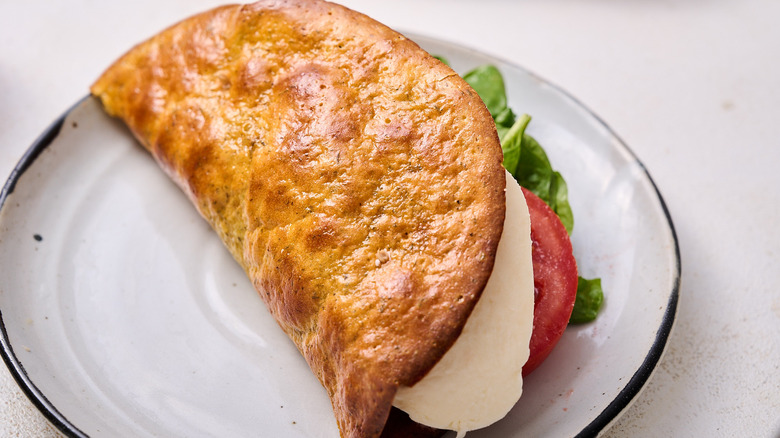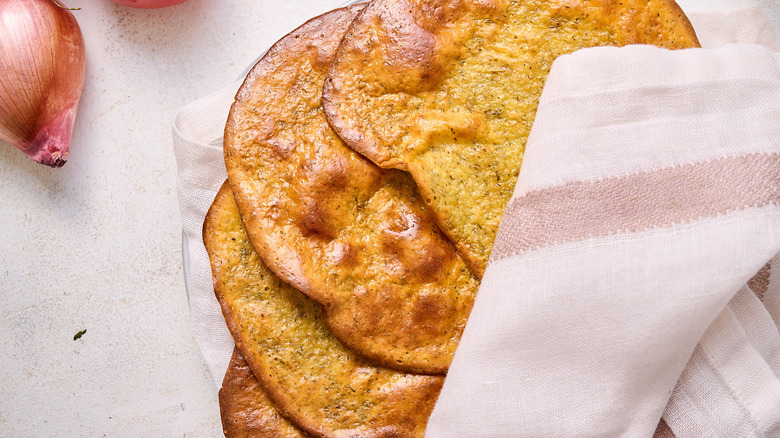Internet-Famous Cottage Cheese Flatbread Recipe
Cottage cheese is finally getting the recognition it deserves as an excellent source of healthy protein — or rather, a resurgence, thanks to social media. While the fitness community may have always been privy to the magic of cottage cheese, the oddly curdled yogurt has gotten a widespread bad rap until going viral on TikTok. Recipes like cottage cheese ice cream have inspired cooks beyond fitness influencers to get creative with the high-protein dairy, sometimes even baking it into savory dishes.
One savory way to use cottage cheese is to bake it into a flatbread, another trend that social media scrollers may have stumbled across. It seems like magic — eggs, cottage cheese, and seasonings transforming into bread — but it's not as mysterious as it appears. The "flatbread" is really more of an omelet or frittata, and without the right seasonings, tastes pretty much like eggs, too. The key, as written in this recipe written with developer Michelle McGlinn, is to add herbs and aromatics, then bake until very crispy. Though it may never be true bread, the clever technique helps turn a cheesy, thin frittata into a delicious vessel for sandwich fixings. And when you can't have wheat, like in keto or gluten free diets, a delicious alternative is more than good enough.
Gather the ingredients for internet-famous cottage cheese flatbreads
The only ingredients you will need for this recipe are cottage cheese, eggs, a shallot, garlic, dried parsley, dried thyme, salt, and pepper. You can use fresh herbs if desired, or vice versa, swap and use powdered garlic and onion powder instead of fresh. Any cottage cheese will work, but you'll have the most success (and most moist flatbread) with 1 to 2% fat.
Step 1: Preheat the oven
Preheat the oven to 350 F.
Step 2: Prepare a baking sheet
Line a baking sheet with parchment paper and spray with grease.
Step 3: Combine ingredients in a blender
Combine all ingredients in a blender.
Step 4: Blend
Blend until smooth.
Step 5: Pour the mixture on a sheet tray
Slowly pour the mixture onto the sheet tray in four ½-cup sections.
Step 6: Bake until browned
Bake for 40 minutes or until browned.
Step 7: Let cool
Let cool completely.
Step 8: Serve
Once cooled, use the flatbread for wraps or sandwiches.
Internet-Famous Cottage Cheese Flatbread Recipe
These cottage cheese flatbreads are internet-famous for a reason - they're absolutely loaded with protein and fit into vegetarian, keto, and gluten-free diets.
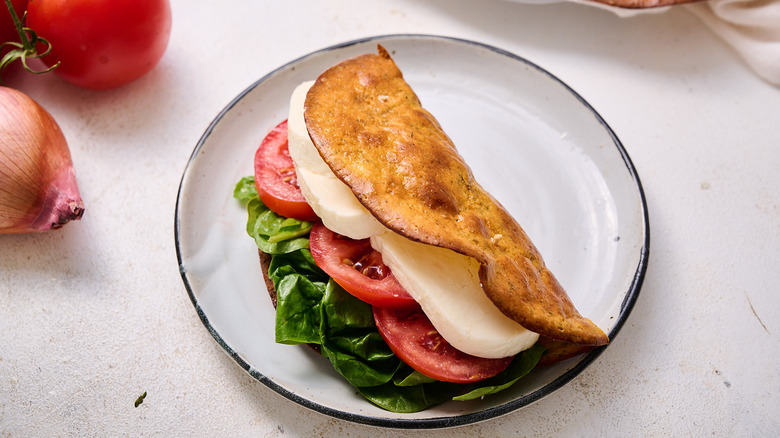
Ingredients
- 2 cups cottage cheese, drained of water
- 4 eggs
- 1 small shallot
- 1 clove garlic
- 2 teaspoons dried parsley
- 2 teaspoons dried thyme
- ¼ teaspoon salt
- ¼ teaspoon pepper
Directions
- Preheat the oven to 350 F.
- Line a baking sheet with parchment paper and spray with grease.
- Combine all ingredients in a blender.
- Blend until smooth.
- Slowly pour the mixture onto the sheet tray in four ½-cup sections.
- Bake for 40 minutes or until browned.
- Let cool completely.
- Once cooled, use the flatbread for wraps or sandwiches.
Nutrition
| Calories per Serving | 183 |
| Total Fat | 9.0 g |
| Saturated Fat | 3.3 g |
| Trans Fat | 0.0 g |
| Cholesterol | 179.1 mg |
| Total Carbohydrates | 6.6 g |
| Dietary Fiber | 0.6 g |
| Total Sugars | 4.0 g |
| Sodium | 418.2 mg |
| Protein | 18.3 g |
What can I use cottage cheese flatbreads for?
Flatbreads are used in many cultures for many different reasons. Most commonly, you'll find flatbreads used to house ingredients like vegetables and meat that effectively make it into a sandwich. In other instances, the bread might act as a means to scoop stews, soups, or curries out of a serving bowl. This cottage cheese flatbread can be used for all of these dishes and more, such as taco-style.
For a flatbread-take on a classic sandwich, fill the flatbread with lettuce, tomato, mayonnaise, and bacon for a flatbread BLT. Add mozzarella and pesto for a caprese twist, or use seitan or tempeh for a vegetarian alternative. You can also swap the bacon for deli meats like turkey or ham. You can also use the flatbreads in place of pita, wrapping them around red onions, tzatziki, and shaved steak for a light gyro. Finally, if you're more of a dip-and-scoop person, use these flatbreads in place of naan for a high-protein accompaniment for chicken tikka masala or traditional curries.
What is the benefit of using cottage cheese for flatbread?
We know what you're thinking — this is a lot of work for what is essentially a really thin omelet. The truth is, making wheat flatbread from scratch would take much longer, with more hands-on time; this recipe is technically only a few minutes of work. Sure, you could simply buy flatbreads from the store, but not everyone has that luxury, and those certainly don't come with the protein content of cottage cheese. For a homemade option these easy flatbreads come with unique benefits on their own that only make the delicious flavor even better.
These flatbreads aren't just great for keto and gluten-free diets, but for anyone looking to increase their protein. Every cup of cottage cheese is about 25 grams, making 1 batch of flatbreads around 50 grams of protein total. Add in the eggs at 6-7 grams a piece, and you have 62 grams of protein in one batch of flatbreads. Divided among four portions, you'll have somewhere around 15 grams of protein per serving. Considering that you're liking to fill these flatbreads with meat or other protein sources, you could be looking at a very high-protein lunch. Bread-based flatbreads aren't renowned as a high-protein source, so in using cottage cheese, you can maximize your macros easily without sacrificing flavor.
